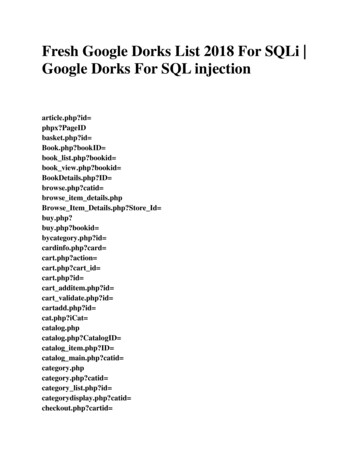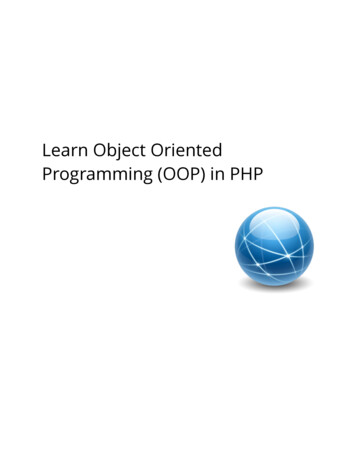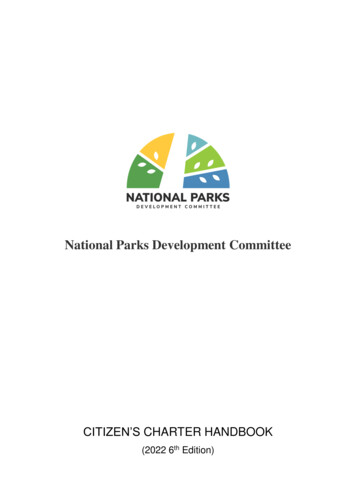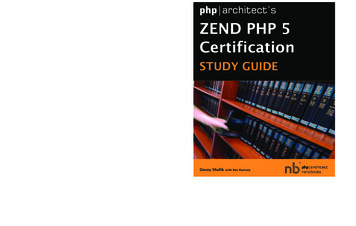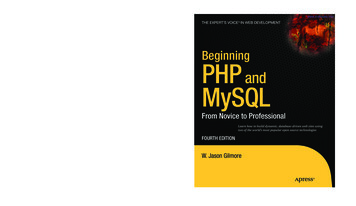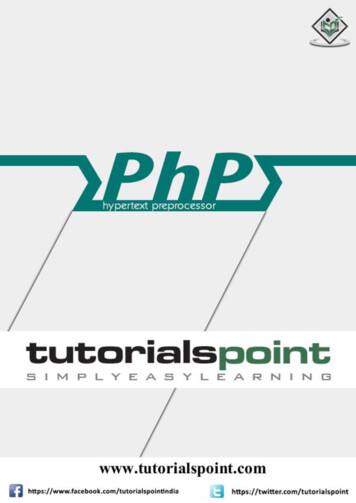
Transcription
CCSAPHPCheckpointwww.sevenmentor.com
1. PHP Basicsa. How PHP Worksb. How PHP differs from ASP.NETc. The php.ini Filed. Basic PHP Syntaxe. Variablesf. PHP Operatorsg. Creating Dynamic Pagesi. Single Quotes vs. Double Quotesii. Howdy World!2. Flow Controla. Conditional Processingi. If Conditionsb. If Conditionsc. Loopsi. whileii. do.whileiii. foriv. break and continue3. Arraysa. Enumerated Arraysb. Initializing Arraysc. Appending to an Arrayd. Reading from Arrayse. Looping through Arraysf. Associative Arraysg. Superglobal Arraysh. Two- and multi-dimensional Arraysi. Reading from Two-dimensional Arraysj. Looping through Two-dimensional Arraysk. Array Manipulation Functionswww.sevenmentor.com
4. PHP and HTML Formsa. How HTML Forms Workb. A Sample HTML Formc. Form Variablesd. GET versus POST5. String Manipulationa. Formatting Stringsi. Concatenationii. String Manipulation Functionsiii. Examples of String Functionsb. Magic Quotesi. magic quotes gpcii. magic quotes runtimeiii. Recommendation on Magic Quotesiv. Conclusion6. Reusing Code and Writing Functionsa. Including Filesi. requireii. require onceiii. auto prepend file and auto append fileb. User Functionsi. Defining and Calling Functionsii. Default Valuesiii. Variable Scopeiv. By Reference vs. By Valuec. Form Processingd. Code Organizationwww.sevenmentor.com
7. Managing Dataa. Querying a Database with mysqlii. mysqli() Overviewii. mysqli Methods and Propertiesiii. Inserting and Updating Recordsiv. mysqli Prepared Statementsb. Querying a database with PDOi. What is PDOii. Common PDO Driversiii. Connections and Exceptionsiv. Inserts and Updates with PDOv. Placeholders (Named and Unnamed)vi. Selecting Datac. How the Drupal database abstraction layer works8. Authentication with PHP and SQLa. A Database-less Login Formb. Conclusion9. Session Control and Cookiesa. Sessionsi. Configuring Sessionsii. Session Functionsb. Cookiesc. PHP and Databases10. Object-Oriented PHPa. Building a Classb. Working with Properties and Functionsc. Private, Protected, Public modifiersd. Inheritancee. Interfacesf. Building a Web Page Objectg. PHP Objects in N-Tier Web Architectureh. Importance of PHP Business Objectswww.sevenmentor.com
11. Drupal 7 Basicsa. How Drupal beganb. What is Drupal 7c. What Technology Does Drupal Use?d. What is Drupali. Content Management Systemii. Content Management Frameworkiii. Web Application Frameworke. Drupal terminologyi. Modulesii. Themesiii. Nodesiv. Blocksf. Drupal Workflowi. Bootstrapii. Hooks and Callbacks12. Getting starteda. Installing Drupal 7b. The Admin Interfacei. Creating Contentii. Managing Contentiii. Site Buildingiv. Site Configurationv. User Managementvi. Reportsvii. Help13. Out of the Box Modulesa. Core Requiredb. Core Optional-enabledc. Core Optional-disabledwww.sevenmentor.com
14. User Contributed Modulesa. What They Areb. Where They Arec. What They Dod. Downloading and Enablinge. Popular Modulesf. Module selection and evaluation15. Layouts in Drupala. Blocks and Regionsb. Default Blocksc. Custom Blocksd. Configuring Blocksi. Enabling Default Blocks and Controlling the Front Page16. File Systema. Download Methodsb. File Modulec. Image Moduled. Storing user uploaded materials17. Custom Content Types with the Fields Modulea. The PAGE and the ARTICLEb. Input Filtersc. Creating Custom Content-Typesd. Field Permissionse. Adding Custom Fields to Content-Typesf. Using the Manage Display Settingsi. Teaser / Body Displaysii. Labelsiii. Display Formatswww.sevenmentor.com
18. Working with Taxonomya. What is taxonomy?b. Vocabulariesi. Required Vocabularyii. Controlled Vocabularyc. Termsi. Single and Multiple Termsii. Adding Termsd. View Content by Terme. Storing Taxonomiesf. Module-Based Vocabulariesg. Common Functions19. VIEWS: Advanced Displays With Contributed Modulea. Overview of VIEWSb. VIEW Typesi. Default Viewsii. Overridden Viewsiii. Normal Viewsc. Displaysi. Basic Settingsii. Display Typesd. Creating a VIEW With the VIEWS User Interfacei. Basic Settingsii. Fields vs Nodeiii. Filtersiv. Argumentsv. Relationshipswww.sevenmentor.com
20. The Form APIa. Form Processingb. Validationc. Form Submissiond. Redirectione. Creating Basic Formsi. Custom Module Basicsii. Creating your own Custom Modulef. Enabling the Custom Form Moduleg. Accessing the Custom Formh. Form API Properties21. XML-RPC and RESTa. What is XML-RPC?b. XML-RPC Clientsc. A Simple XML-RPC Serverd. REST (with the Services Module)i. Creating a Drupal REST Serverii. Testing your REST Serverwww.sevenmentor.com
22. Theminga. Architecture of the Theme Systemi. Theme Templatesii. The .info fileiii. Theme Engineiv. Hooksb. Creating a Themei. Where are the files?ii. Installing a Themeiii. Creating and Enabling a Customized Sub-Themeiv. Theme Inheritance and Sub-Themesc. Responsive Design with Adaptive Themesi. Mobile First Designii. CSS Structureiii. Responsive Stylesheetsiv. Progressive Enhancementv. Adaptive Theme Settingsd. Theming with CSSe. Theming with a custom stylesheetf. Overriding Theme Behavior with PHP23. Creating Interactive Forms with the Webforms module24. Creating Rules with the Rules modulewww.sevenmentor.com
25. Drupal’s Database Abstraction Layera. Functions and Methodsb. Drupal Database Connectionsc. Selecting records with DB QUERYd. Custom Database Connections with PDOe. Advanced Conceptsi. The Schema API1. Adding tables to a module2. Adding Schema definition to a moduleii. DB SELECT1. Building a page display with DB SELECTiii. Maintaining tables with module update functions26. DRUSHa. What is DRUSHb. Installation and Configurationc. Getting Startedd. Useful Commandse. Database Updatesf. Backup Site and Databasesg. Summary of Commandsh. Site Aliasesi. Scripting with DRUSH27. Conclusionwww.sevenmentor.com
How the Drupal database abstraction layer works 9. Session Control and Cookies 8. Authentication with PHP and SQL a. A Database-less Login Form b. Conclusion a. Sessions . The Form API a. Form Processing b. Validation c. Form Submission d. Redirection e. Creating Basic Forms i. Custom Module Basics ii. Creating your own Custom Module
